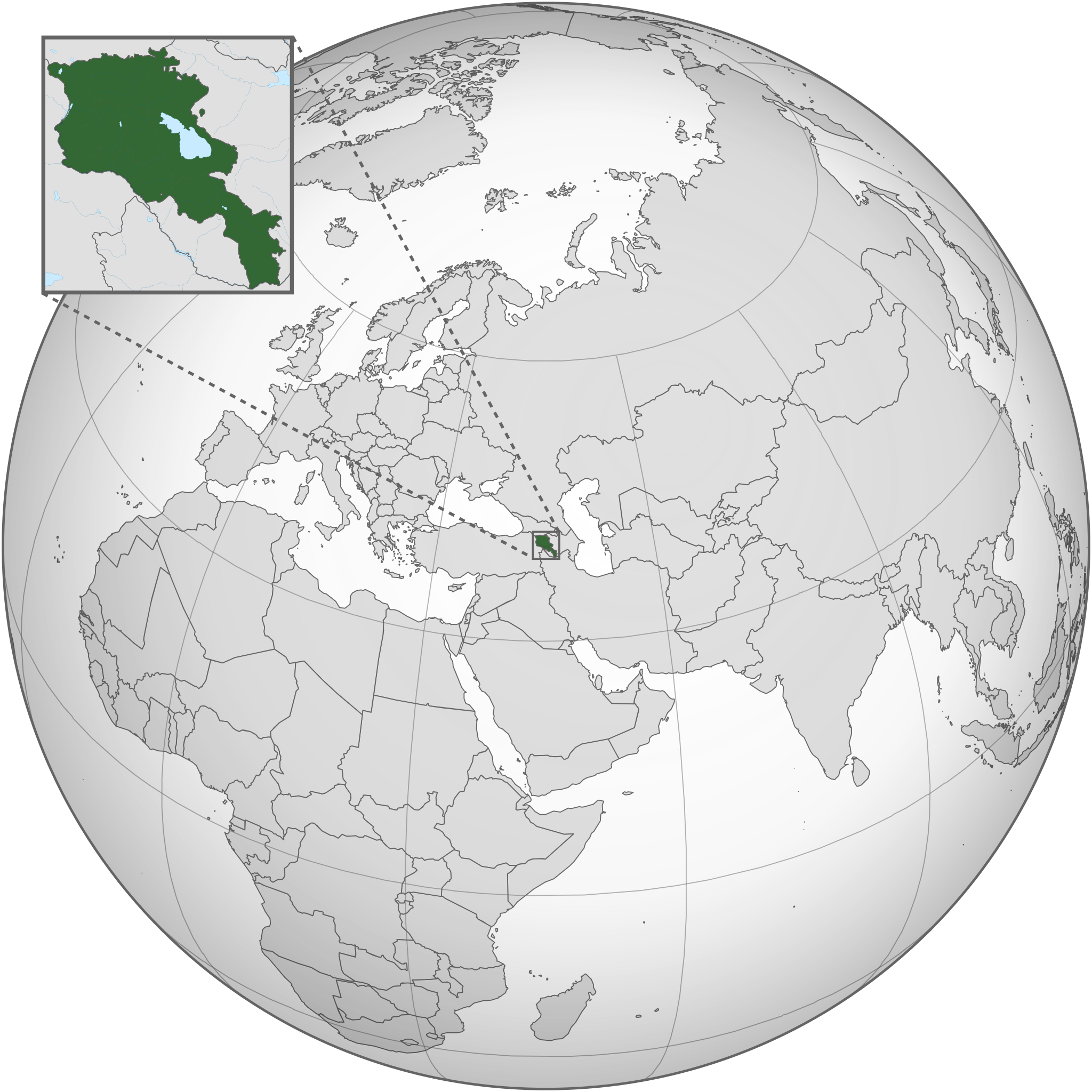More languages
More actions
| Republic of Armenia Հայաստանի Հանրապետություն | |
|---|---|
 | |
| Capital and largest city | Yerevan |
| Official languages | Armenian |
| Dominant mode of production | Capitalism |
| Area | |
• Total | 29,743 km² |
| Population | |
• 2022 estimate | 3,000,756 |
Armenia, officially the Republic of Armenia, is a country in the Caucasus.
History
Early history
The first unified Armenian state formed in 190 BCE. The Roman Empire conquered Armenia in 55 BCE, and it later became a crucial part of the Byzantine Empire. After the fall of the Byzantine Empire, Persia and the Ottoman Empire fought over the region before partitioning it in 1639. The Russian Empire conquered the Persian part of Armenia in 1828. During the First World War, the Ottomans massacred 1.5 million Armenians, most of the population of Western Armenia.[1]
Soviet era
The Soviet government was forced to cede Armenia to Germany in the Treaty of Brest-Litovsk. After the German defeat, Armenian nationalists formed an independent government with support from Britain and France. Armenian leftists founded the Armenian SSR in November 1920, and the Red Army entered Armenia in December to fight off a Turkish invasion. Armenia joined the Soviet Union in 1922 as part of the Transcaucasian SFSR and became its own republic in 1936.[1]
Capitalist counterrevolution
In 2018, Nikol Pashinyan led a colour revolution against Serzh Sargsyan.[2]
References
- ↑ 1.0 1.1 Albert Szymanski (1984). Human Rights in the Soviet Union: 'The European Nationalities in the USSR' (pp. 85–86). [PDF] London: Zed Books Ltd. ISBN 0862320186 [LG]
- ↑ Edgar Konstanyan (2022-10-28). "Nagorno-Karabakh: Marxist Point of View" Politsturm. Archived from the original on 2022-10-28. Retrieved 2022-10-29.


